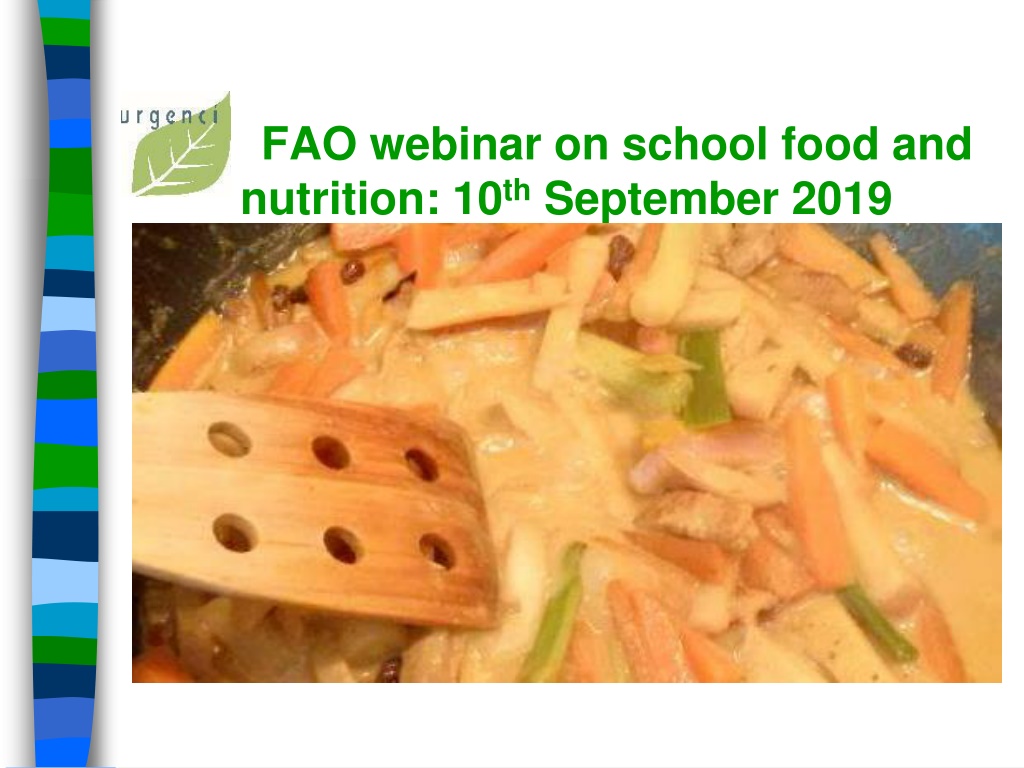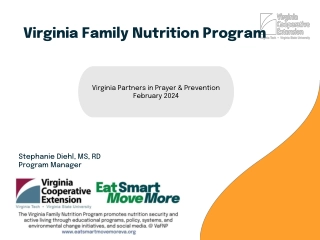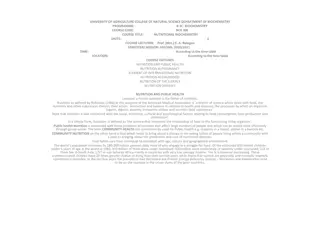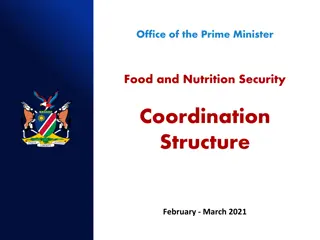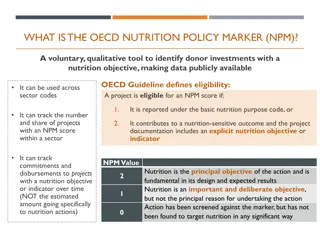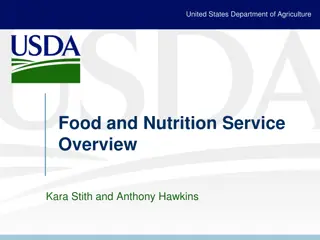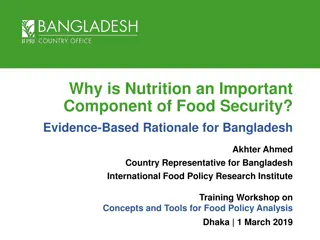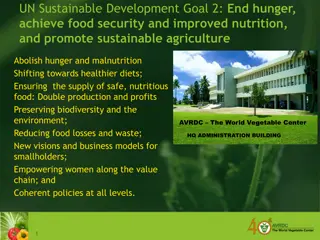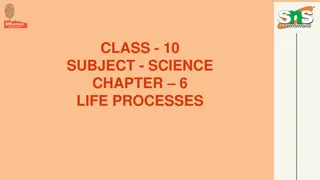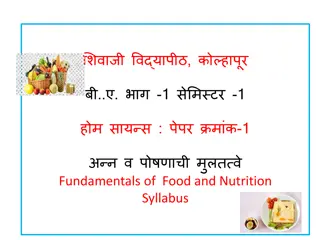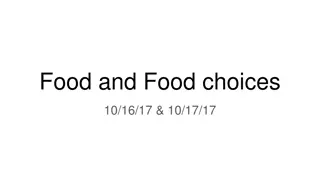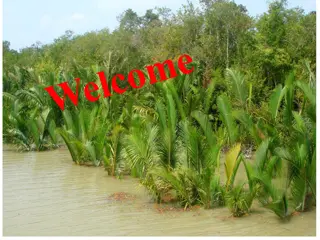Exploring School Food and Nutrition Choices for a Sustainable Future
This webinar delves into key considerations for school food programs, such as local procurement, nutritional value versus calories, and creating sustainable food chains. It also highlights the global food industry landscape, emphasizing the importance of small producers and agroecological practices for optimal nutrition. The content urges a shift towards healthier, locally-sourced foods to combat food scandals and non-communicable diseases, offering insights into building resilient food systems.
Download Presentation

Please find below an Image/Link to download the presentation.
The content on the website is provided AS IS for your information and personal use only. It may not be sold, licensed, or shared on other websites without obtaining consent from the author. Download presentation by click this link. If you encounter any issues during the download, it is possible that the publisher has removed the file from their server.
E N D
Presentation Transcript
FAO webinar on school food and nutrition: 10thSeptember 2019
FAO webinar on school food and nutrition: some core considerations n The size of the town/city and the policy of land conservation for growing food n Who produces the food and where? n Green local procurement: agroecology or organic certification? n Canteens: just for eating or also education? n Nutritional value versus calories and NCDs n How to create a sustainable local chain and jobs? What economic model?
We have important choices to make. Do we want our food system to look like this?
What is the global reality today? n 20 global corporations control the food chain n The 3 biggest corporations control over 50% of the seeds n 4 corporations control over 99% of the livestock breeding n 10 corporations control 55% of fertilisers n 4 traders control 75% of the grain and soybean market n 11 corporations control 30% of the food processing industry
Size of settlement and access to land/local producers: farmers and fishers Size Key positives Key challenges Small town or village Municipality may own land or know producers in person Probably no longer collective kitchen facilities: need to rebuild Medium sized town, small city Can quite easily develop Municipal policy and ensure land use Long-standing contracts with industrial food companies Large town or city Can work at participatory neighbourhood level Preservation of agricultural land/oceans from speculation
Nutritional aspects Conventional ag /industrial processed food Industrial organic Agroecologically grown locally sourced peasant agriculture/fisheries Richer in nutrients; rich soil microbiome = healthier human microbiome = healthier children Fresh farm to fork = optimal nutritional value and taste Pesticides and other chemical inputs harmful to children s health Better, but mono- cropping = weak soil microbiome = lower nutritional value Poor nutritional value: excessive fats and sugars not healthy; nutritional value lost in processing Better, but if long distance/transport involved, much loss of vitamins and nutritional value
Economic model for Green Public Procurement (agroecology) policies n Green belt and agricultural land use protection (VGGT) n Community Land Trusts n Producers collectives/co-operatives for tenders (Connecting Smallholders to Markets) n Parent-teacher associations and Local Solidarity Partnerships between Municipalities, producers and consumers n Participatory Municipal policies and budgeting: all part of Social Solidarity Economy, the Commons, sustainable territorial food systems and local economic development
